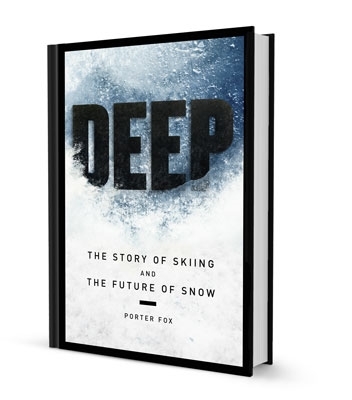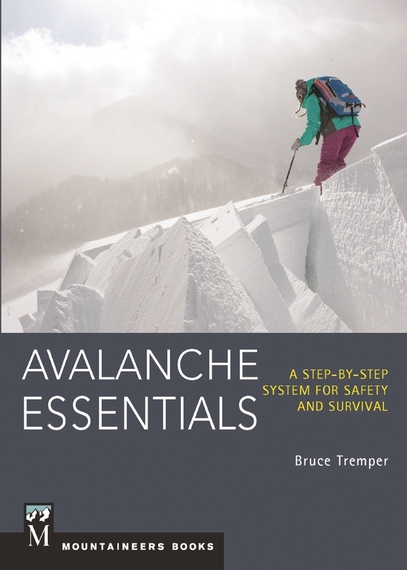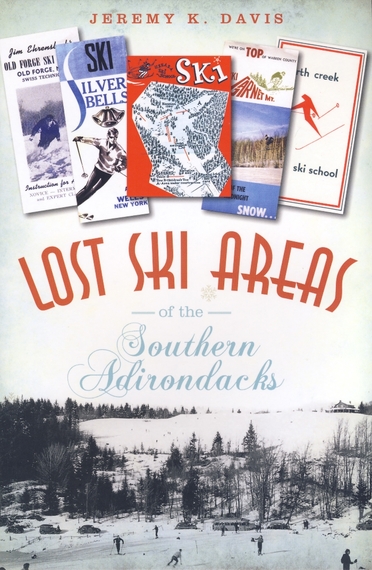I don't know if you call it a "ski-brary" or a "librare-ski," but here are three books that we'd recommend adding to that dusty old stack of tattered ski literature sitting on your corner shelf.
The works speak to the sport's past (as in "lost" ski areas), its present (as in avalanche safety), and the future (as in climate change). Each author dissects a unique aspect of the sport, and all together they afford skiers and riders an opportunity to add depth to their snow stake of knowledge.
Author Jeremy Davis, also founder of the New England Lost Ski Areas Project, outlays the history of 38 "lost" ski areas in the Adirondacks, including photos and memories from those who skied there. Meanwhile Bruce Tremper, director of the Utah Avalanche Center, presents a step-by-step systematic approach to practicing avalanche safety and survival, and Porter Fox, also a features editor at Powder magazine, explores the potential impact of climate change on the future of the sport. Here's a closer look. (Digital versions of these books are also available).
Digging Deep
Published by Rink House Productions.
In "Deep - The Story of Skiing and the Future of Snow," author Porter Fox, a features editor at Powder magazine, seeks to weave current climate change data and predictions into the fabric of ski history and the culture of big mountain powder skiing. The narrative begins with Fox's own story of skiing, as he tells of his early days on skis, and introduces readers to some of the personalities he met along the way.
He spoke of his motivation for writing the book: "After seeing all of the data and predictions of how much snow has already disappeared from the planet, and to how much is predicted to disappear in the next 75 years, I figure the story had to be told, and sooner rather than later."
In his travels, Fox spends more than a month in Europe visiting some of the iconic venues of skiing, including Chamonix and Le Grave in France, and Zermatt, Switzerland. It's here where Fox illustrates his prowess as a writer and story teller. This part of the book features ski writing at its finest with historical perspectives of the various alpine venues, word sketches of local personalities and scientists, and of course enough drooling detail about the powder skiing to incite jealousy.
Throughout, the 288-page book includes scores of current climate change data and citations to a host of studies. The digital version includes more than a dozen embedded videos and recorded interviews.
Today the global scientific community - with the exception of a very small percentage of dissenting researchers - agrees on what is (and will) likely occur due to climate change. Yet within that, there is a host of varying, and sometimes conflicting data and projections.
Skiers and snowboarders will enjoy this book, and Fox should be commended for his work. He scoured through loads of research, conducted interviews in several countries, and put it all together in book form in just a year and a half.
Avalanche Essentials
Published by Mountaineer Press.
In Avalanche Essentials, Bruce Tremper, director of the Utah Avalanche Center, presents a step-by-step systematic approach to practicing avalanche safety and survival. At this stage of his career, Tremper is regarded as one of the preeminent avalanche experts in the nation; except, he says, by the avalanches.
In the 176-page Avalanche Essentials, Temper provides an abridged dissertation of his vast experience and knowledge as an avalanche professional that began at Montana's Bridger Bowl Ski Area in the late 1970s. After his 35 years in the business of avalanche safety and education, Tremper asserts that the only way to safety operate in dangerous avalanche terrain is by conducting your activities within a tightly controlled system.
"The system is the solution," he writes.
What complicates avalanche safety and education, according to Tremper, is the fact that avalanches happen so randomly and being caught in one is an extremely rare occurrence. Most of the time, he says, backcountry travelers have no idea how close they may have been to being caught in an avalanche. He writes:
"It's like a slot machine in which the quarters jingle into your cup 59 out of 60 times. Yes! Nothing like success! Then on the 60th pull, two big goons throw a gunny sack over your head and beat you with baseball bats, and charge your credit card $10,000...It takes a lot of pulls on the slot machine handle for us to learn the downside of the game, and with avalanches sometimes we don't survive the lesson."
According to Tremper, there are four main components that determine whether or not an avalanche occurs: snowpack, weather, people, and terrain. The first three of those factors are varying and unpredictable. The only constant is the underlying terrain, so Tremper's approach is to focus on that.
The seven-step system he outlines factors in human nature, poor decision-making, and errors in judgment made in the field. The key, writes Tremper, is to "minimize the damage from our inevitable mistakes, so we can survive the experience."
The Story of 38 Lost Ski Areas and Three Restored Areas
Published by The History Press.
Call me a powder-nerd, but I'm fascinated with ski history, and clearly I am not alone. Author Jeremy Davis just published "The Story of 38 Lost Ski Areas and Three Restored Areas," the third book in his "Lost Ski Area" series. Davis is the founder of the New England Lost Ski Areas Project and he speaks to his passion for chronicling ski areas that no longer exist.
"So many of the areas are disappearing very quickly, and it won't be long before there are few, if any, traces of some of them," he says. "I'm writing these books to preserve the stories of these lost areas in a written, permanent form, and now is the time to capture these stories ... time is running out."
The Adirondack region has a long been a favorite among skiers. As Davis explains, skiers have been flocking to its mountainous landscape and natural snowfall since the very early days of the sport. Downhill ski areas developed during the Great Depression, when New Yorkers looked for an affordable escape to beat the winter blues. Over the coming decades, ski areas expanded with new lifts, lodges and trails.
"Despite the popularity of the sport, many ski areas have disappeared, yet countless people still hold fond memories of them," says Davis.
The book includes photographs and recollections from people who frequented these areas, but it also pays homage to a couple of restored areas and cross-country skiing opportunities that still exist in the Adirondacks. For Davis, these books present an opportunity to put on his detective's hat.
"There's a lot of excitement in solving a mystery, from not knowing anything about a particular area, to being able to discover and share its entire history," says Davis. "I've enjoyed telling the stories of skiing pioneers, many of which are not known to the skiing public today, but without whom the ski industry would not be where it is today."
By Troy Hawks / @HawksSquawk


